The Bumblebee, a carder bee. Here we describe the bumblebee and the life cycle and how they live and breed with photos of them foraging on flowers.
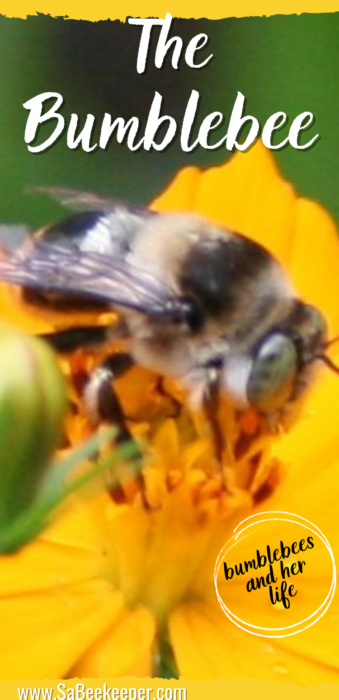
The Bumblebee.
Description.
The shrill carder bee or knapweed carder-bee, is a species of bumblebee. (Bombus sylvarum).
They are larger and fluffy and have very strong wings, and boldly striped. Very easy to spot them,
but sadly only make up to 1 % of the species.
This bumblebee was found in Vilcabamba, Loja. Ecuador. Foraging on the garden of cosmos flowers.
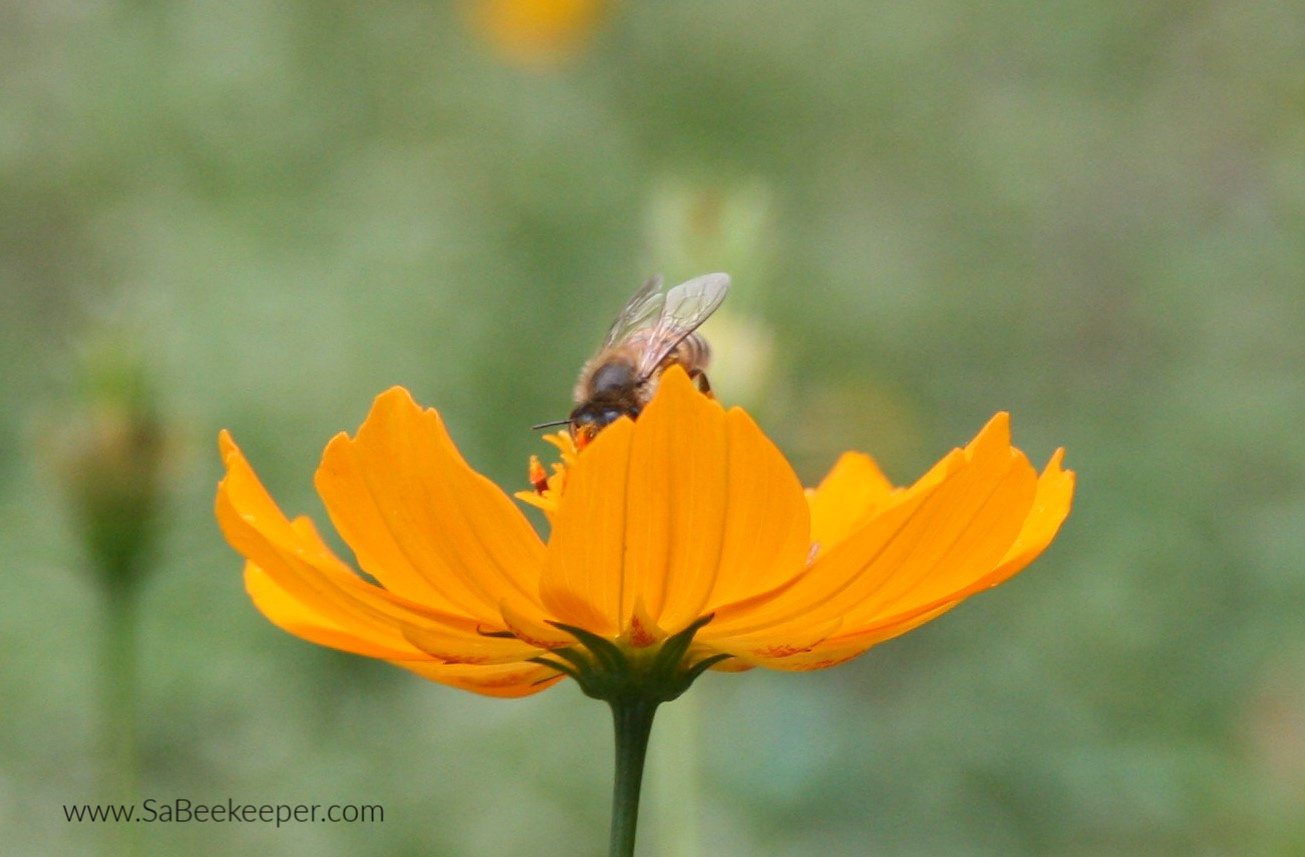
We live just below the equator, in Ecuador. The bumblebee I spotted is not to hairy. As the climate is much warmer.
Their buzz is some what louder than a normal bee, that is what makes you have a look at who is on the flowers.
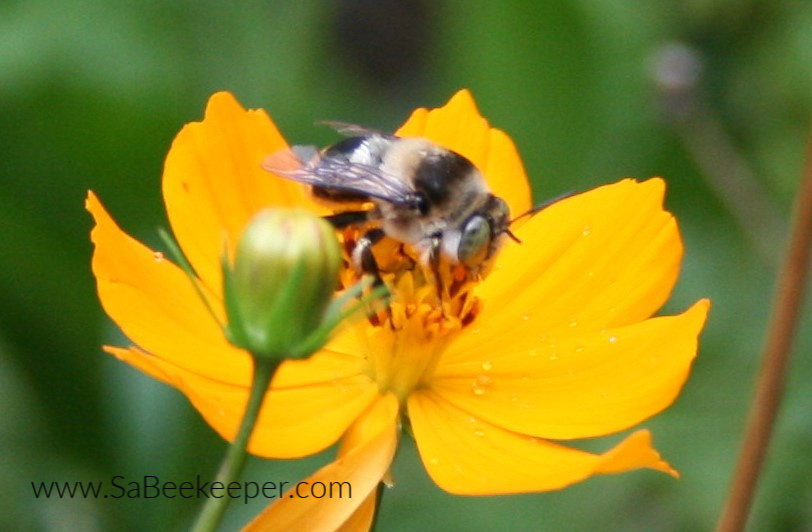
Information.
In the south the pollen collecting hairs are a shorter.
They are similar to the honey bees in the nest and divide up the labor duties, while the queen is still the primary reproductive individual.
The roles are applied much looser than the honey bee.
The worker bees duties are based on the need in the hive and are capable of reproduction.
Queen and worker bumblebees can sting. Unlike in honeybees, a bumblebee’s sting lacks barbs.
So the bee can sting repeatedly without injuring itself. The sting is not left in the wound.
Bumblebee species are not normally aggressive, but may sting in defense of their nest, or if harmed.
Although the queen bumblebee is the main reproducer, towards the end of the season the worker bumblebee will start to lay male offspring.
The difference with the bumblebee is that the colonies only last for one season and only the newborn queen will survive through to the spring, when the process of founding a colony will start all over again.
Their pollen collecting hairs are used for insulation as they operate in colder northern areas.
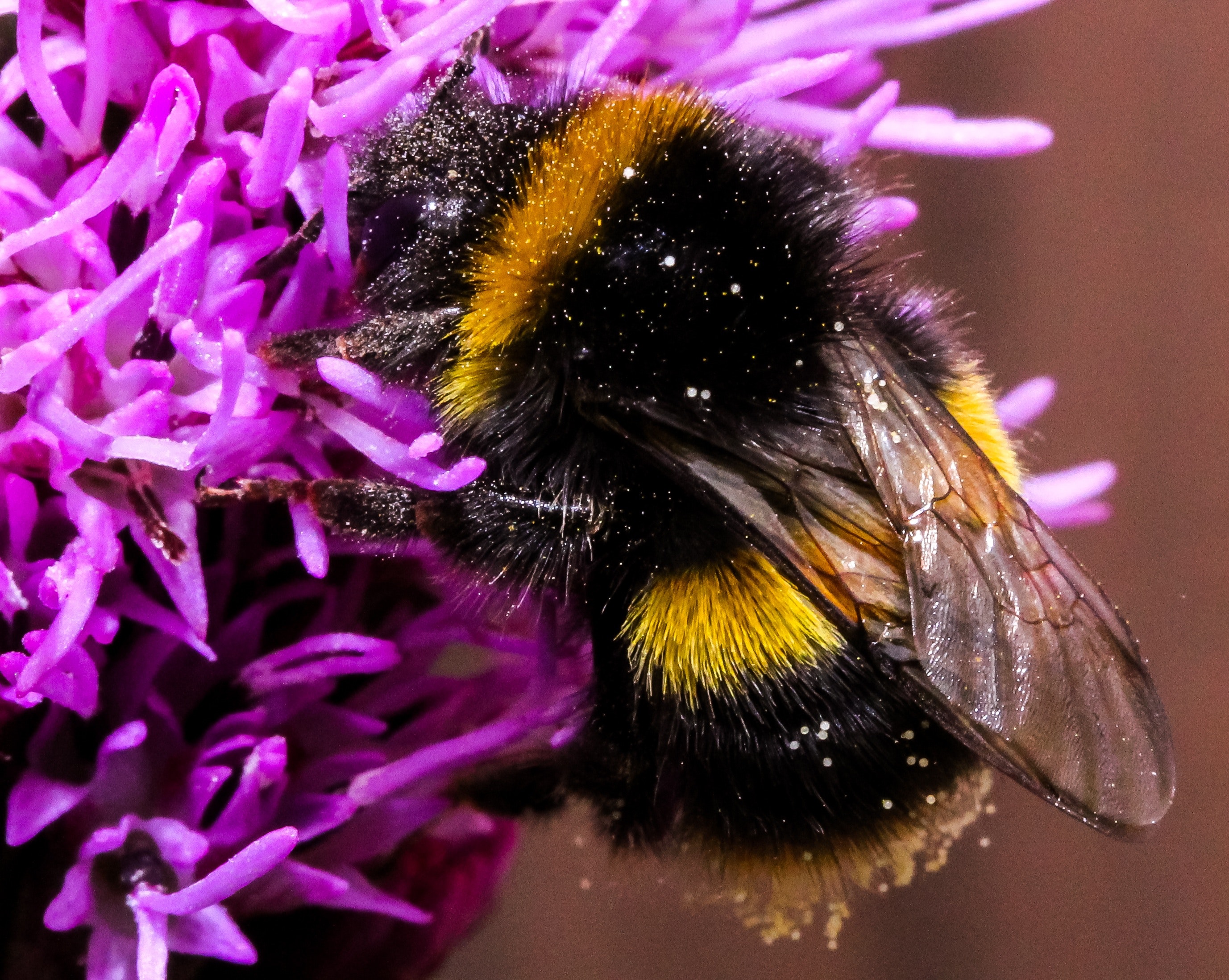
The Bumblebee with pollen collected in it’s pollen baskets on its legs.
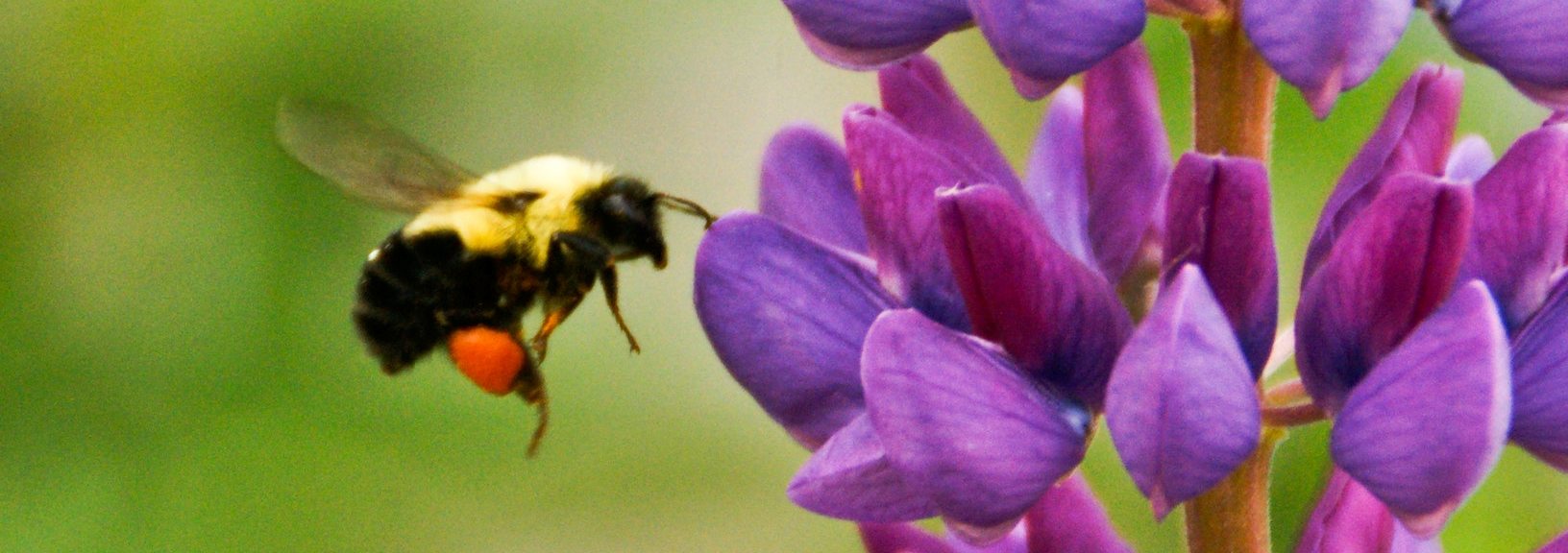
Two bumblebees. The queen emerges at the start of the year from its winter nest.
Then feeds to build up her strength for the building of a nest and rearing her young.
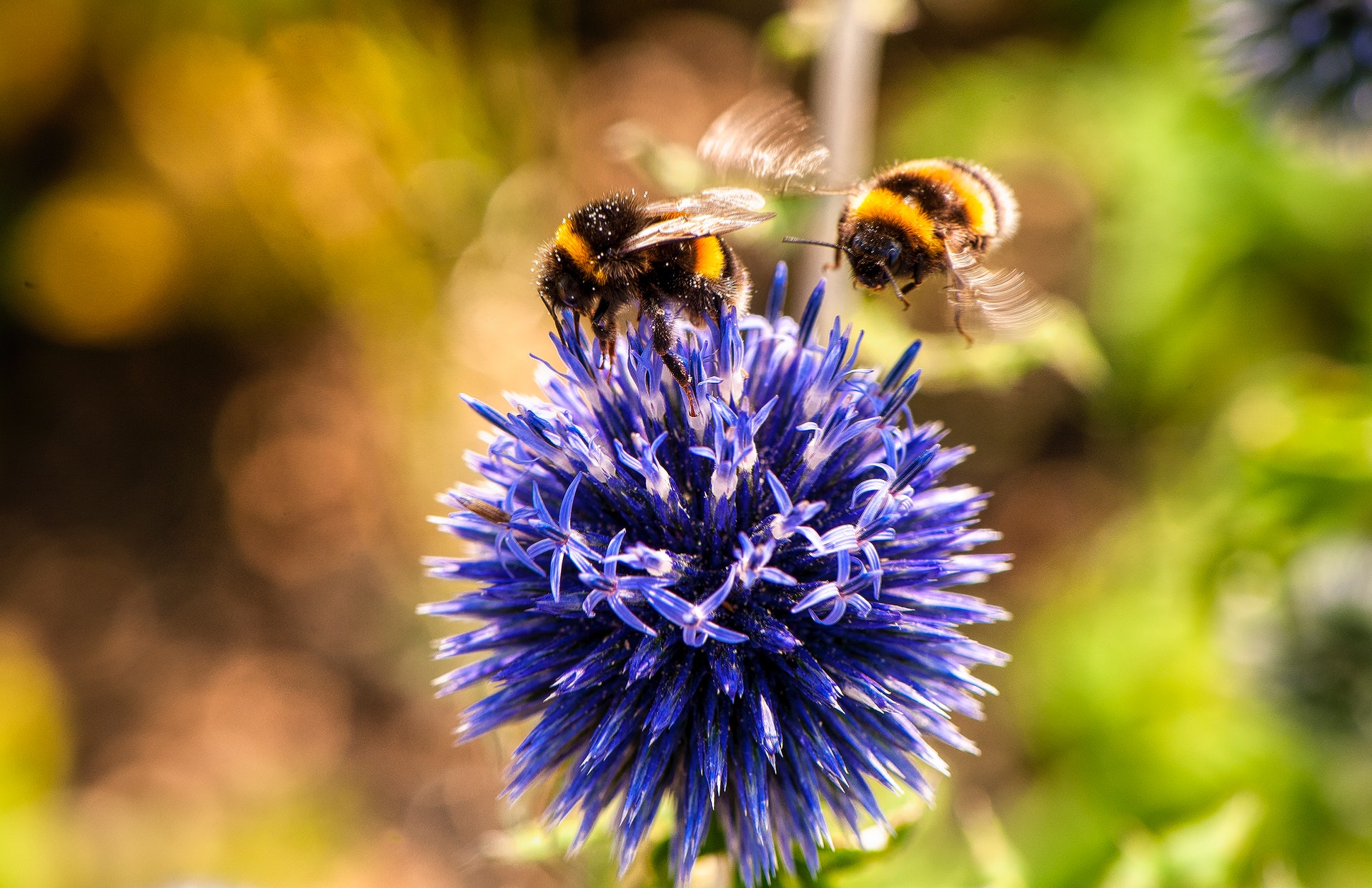
Bumblebee full of pollen on its long hairy coats.
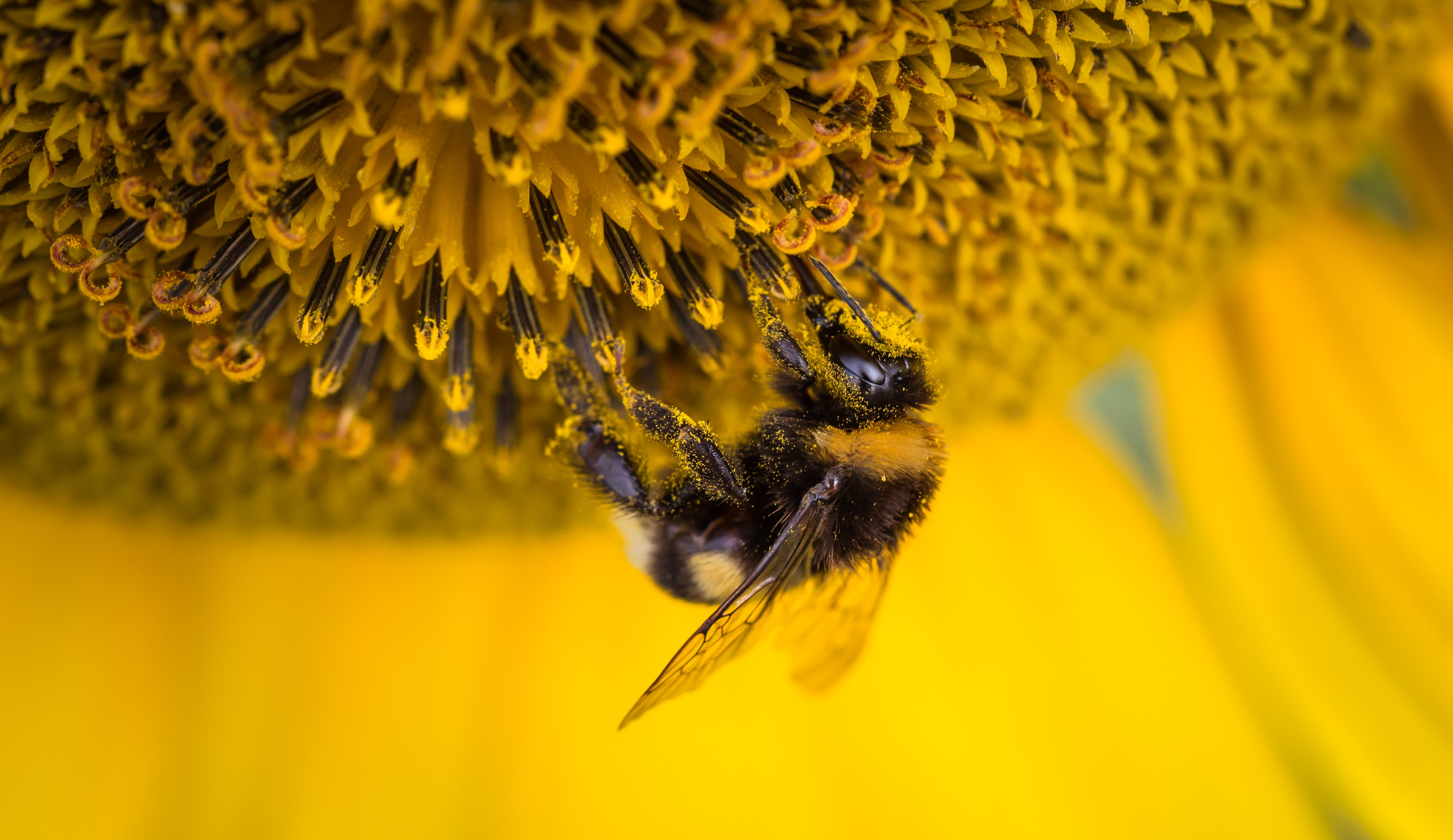
This bumblebee is called the buff tailed bumblebee. Because of its white hairy tail.
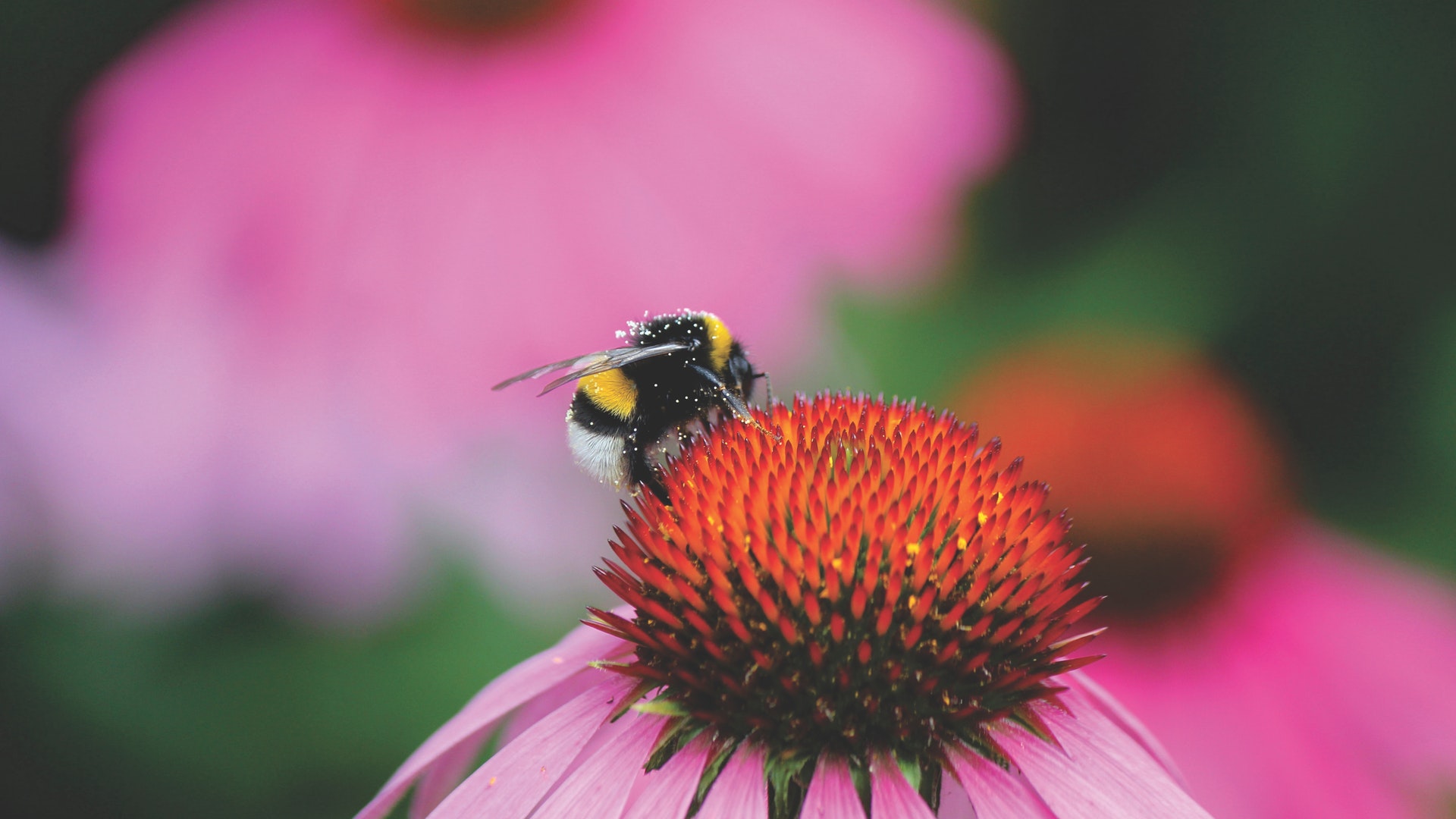
A great close up of a buff -tailed bumblebee.
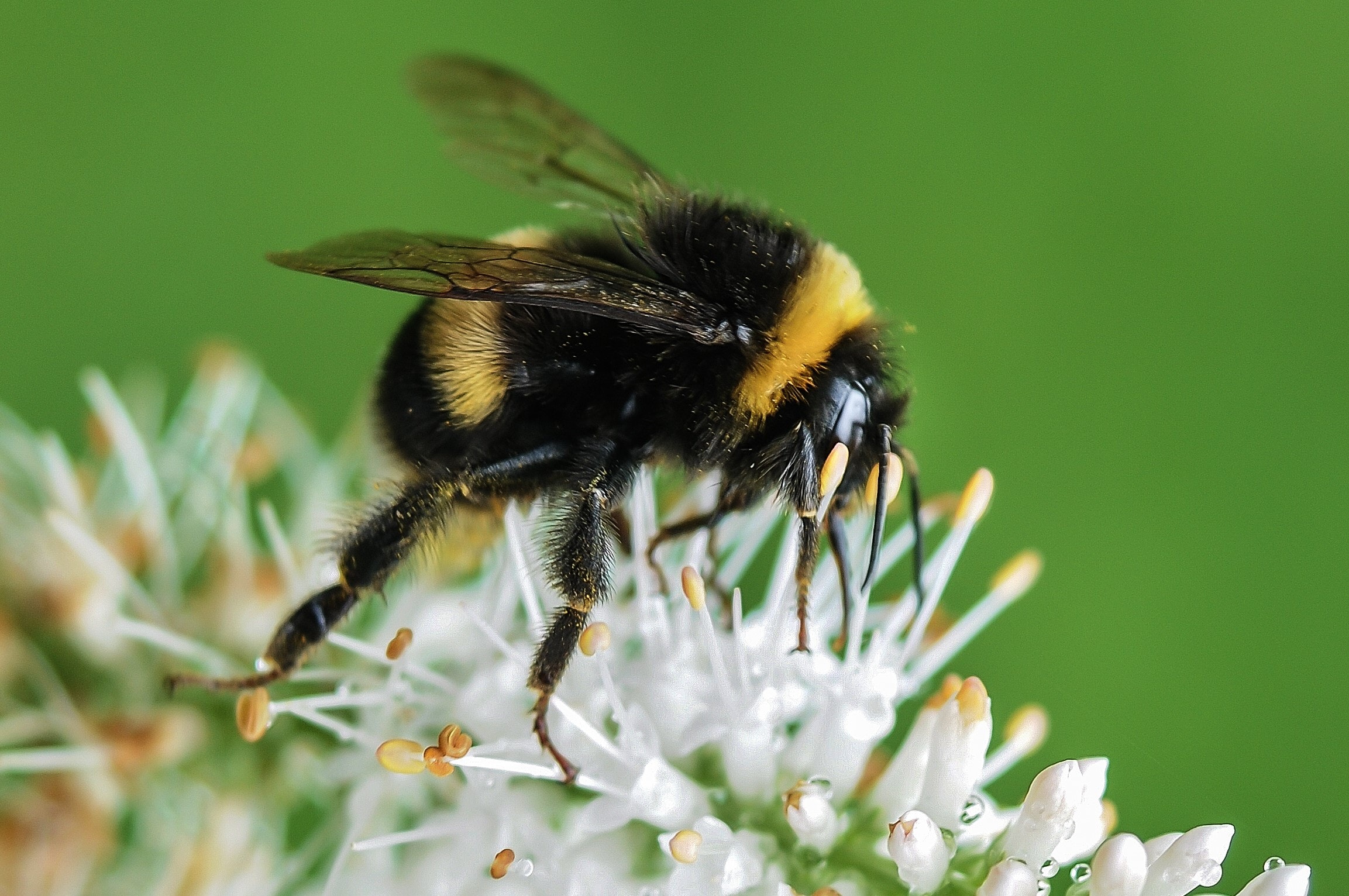
The queen bumblebee will build up her stores and consume a great amount of pollen. She builds up a nest of wax like small honey pots to store her pollen in, soon she expands it to lay her eggs in.
Protein in the pollen stimulates the queens ovaries to develop and start producing eggs.
The queen sits on her eggs like a bird nest, but its balls of wax pots and pollen.
New emerging bumblebees
When the eggs start hatching, there are female bumblebees and they relieve the queen from her duties, of keeping the eggs warm, except the egg laying. They care for the larvae and go out to forage for food and then look after the queen.
End of season
The new queens that are produced at the end of the season must mate with multiple drones before winter season. The queen bumblebee stores their sperm for the rest of her life and never has to mate again.
Winter
Newborn queens are the only members of the colony that survive through the winter.
They find old rodents nests in the ground or empty birds nest or dried grass, depending on species.
The bumblebee that nest above ground is the Tree bumblebee.
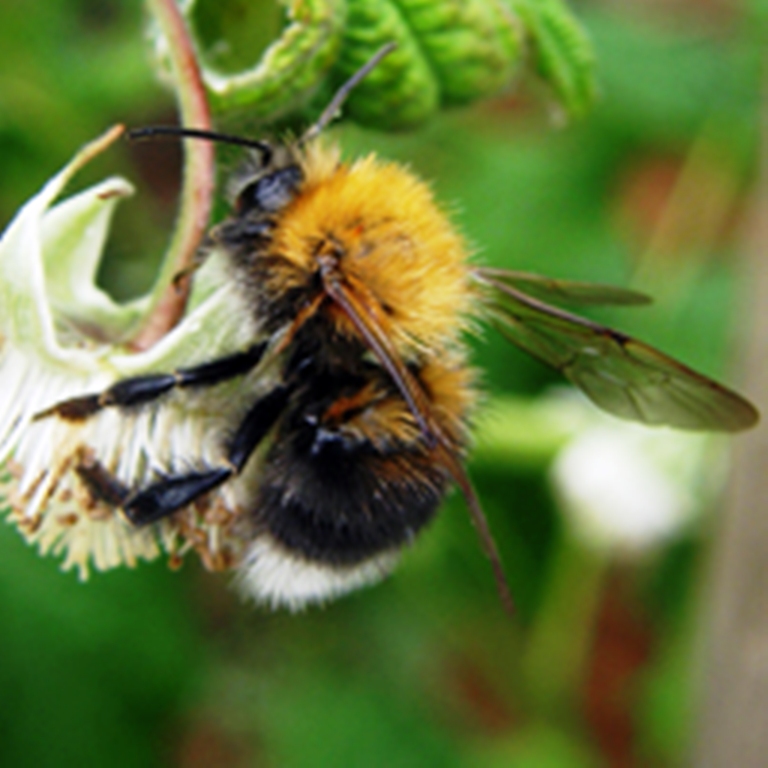
Then they go into hibernation, Normally 2 to 3 months. Stay safe from predators and protected from the winter cold.
Pollinating
The bumblebee is know for its pollination skills, as certain plant stamens need the bee to have a large vibration to dislodge the pollen from the stamens. Otherwise the pollen remains on the stamens.
One example is the tomato plant, which would produce more tomatoes when pollinated in this method.
They are very useful when domesticated and allow the colonies to be useful pollinators within commercial glasshouses and green houses.
Another species is a Black Bumble Bee.
Also, more photos on the nesting habits of the bumblebees.
Leave a Reply